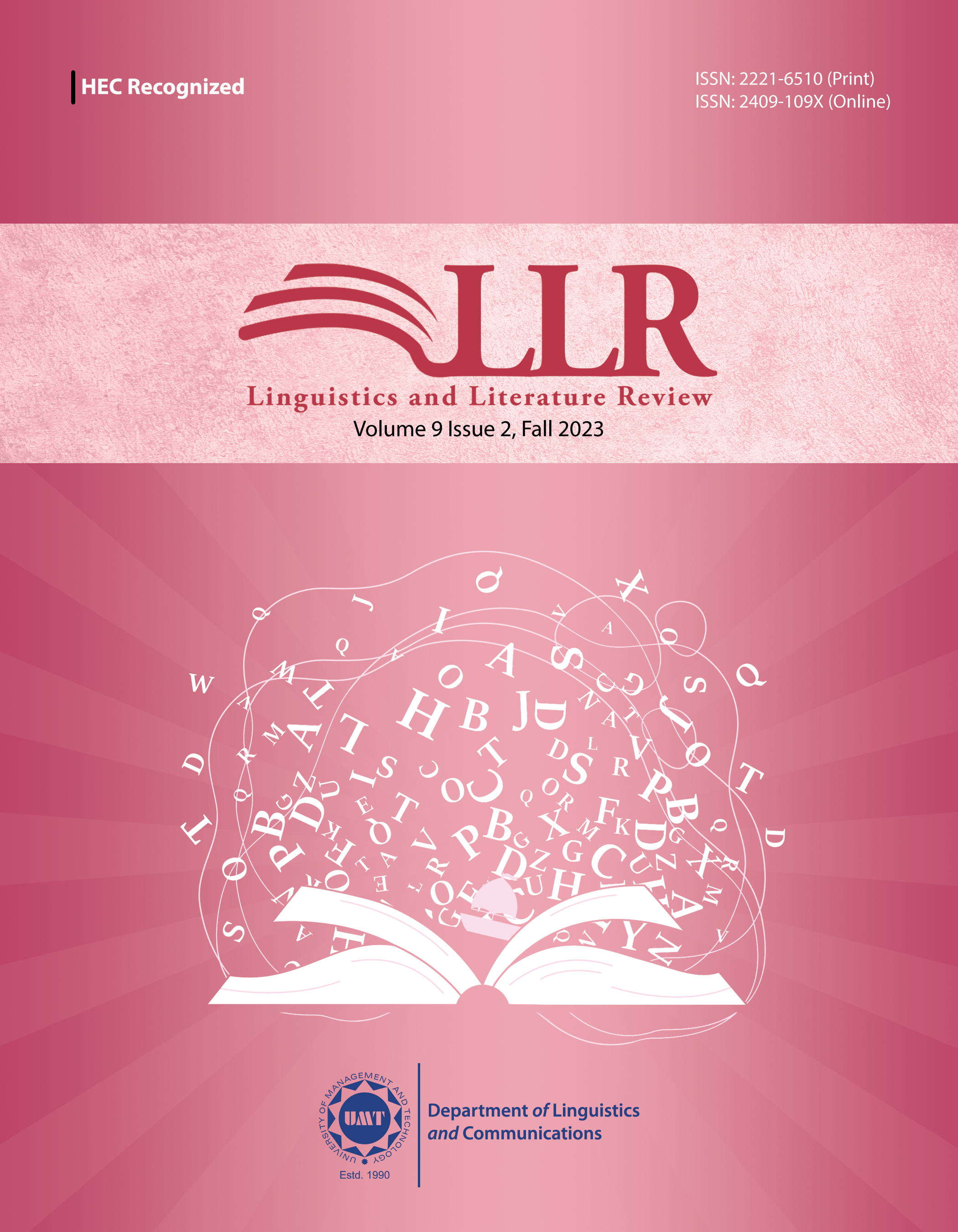Paraphrase and Definition: Two Translation Techniques in Conveying Islamic Economic and Financial Terminology in Arabic-English Dictionaries
Abstract
 Abstract Views: 0
Abstract Views: 0
This paper aims to investigate the frequency of two prevailing translation techniques in the bilingual lexicographic context, which analyzes the Arabic and English writings with a specific focus on Islamic financial and economic terms (IFETs). Furthermore, it attempts to report the preferences of dictionary users who are either translators or translation students. For this purpose, a monolingual dictionary specialized in IFETs was carried out to conduct the analysis, out of which, one hundred terms were randomly selected. These terms were analyzed referentially and technically. Additionally, a search of translational equivalents in two Arabic-English specialized dictionaries was carried out. The IFETs with no entries in the said bilingual dictionaries were rendered into English by using two translation techniques, namely paraphrasing and definition techniques. The results revealed that paraphrasing using a related word was the most frequently used technique than the definition technique. The meanings of 31 terms were adequately conveyed via paraphrasing technique, while only one term was translated with a definition technique. Thus, this study pointed out the pertinent role of the paraphrasing technique in solving the untranslatability of many deeply cultural-bound terms. However, a preliminary survey was conducted to fulfill this study's second aim, which showed that most of the respondents preferred to utilize definitional technique, instead of paraphrasing.
Downloads
References
Adamska-Sałaciak, A. (2013). Equivalence, synonymy, and sameness of meaning in a bilingual dictionary. International Journal of Lexicography, 26(3), 329–345. https://doi.org/10.1093/ijl/ect016
Ali, A. F., Saleh, A. O. H., & Shunmugam, K. (2021). The semantic fields of Islamic financial and economic lexemes. Journal of Islamic Shariah, 1(1), 1–39.
Ali, A. F., Shunmugam, K., Saleh, A. O. H., & Saleh, S. H. (2021). A review of an Islamic financial dictionary. Al-Rashad Journal of Islamic Finance, 1(1), 24–35.
Alruzzi, K. A., & Yunus, K. B. (2019). Arabic synonyms in bilingual Arabic English dictionaries. International Journal of Innovation, Creativity and Change, 8(9), 254–261.
Baalbaki, M., & Ramzi, M. B. (2008). Al-Mawrid Al-Hadeeth - A modern English-Arabic dictionary. Al-Mawrid.
Baalbaki, R. (2009). Al-Mawrid: A modern Arabic-English dictionary. AlMawrid
Baalbaki, R. (2014). The Arabic lexicographical tradition. Brill.https://doi.org/10.1163/9789004274013_001
Baker, M. (2018). In other words: A coursebook on translation (3rd ed.). Routledge.
Bergenholtz, H., & Tarp, S. (1995). Manual of specialised lexicography: The preparation of specialised dictionaries (Vol. 12). John Benjamins Publishing.
Biel, Ł. (2008). Legal terminology in translation practice: dictionaries, googling or discussion forums. SKASE Journal of Translation and Interpretation, 3(1), 22–38.
Collins. (2014). Collins English dictionary. Collins.
Burkhanov, I. (2010). Lexicography: A dictionary of basic terminology.Wydawnictwo Wyzszej szkola Pedagogiczna. Bussmann, H. (2006). Routledge dictionary of language and linguistics. Routledge. https://doi.org/https://doi.org/10.4324/9780203980057
Corréard, M.-H. (2006). Bilingual lexicography. In Encyclopedia of language & linguistics (pp. 787–796). Elsevier. Dickins, J., Hervey, S., & Higgins, I. (2017). Thinking Arabic translation: A course in translation method: Arabic to English (2nd. ed.). Taylor & Francis.
El-Zeiny, I. T. (2017). lexicographic approaches to bridging the lexical gap in translating Islamic juristic terms/concepts into English. International Journal of lexicography, 30(2), 187–224. https://doi.org/10.1093/ijl/ecv035
Enani, M. (2000). Dictionaries for the translator: (An Introduction). El -Anglo Egyptian.
Fengling, L. (2017). A comparative study of Nida and Newmark’s translation theories. International Journal of Liberal Arts and Social Science, 5(8), 31–39.
Hassan, S. S. (2017). Translating technical terms into Arabic: Microsoft terminology collection (English-Arabic) as an example. The International Journal for Translation & Interpreting Research, 9(2), 67–86. https://doi.org/10.12807/ti.109202.2017.a05
Howland, D. (2003). The predicament of ideas in culture: Translation and historiography. History and Theory, 42(1), 45–60.Lew, R. (2013). Identifying, ordering and defining senses. Bloomsbury
Publishing.
Liu, L. (2018). Partial equivalences in bilingual dictionaries: Classification, causes and compensations. Lingua,214, 11–27. https://doi.org/10.1016/j.lingua.2018.08.001
Longman, P. (2019). Longman dictionary of contemporary English. Pearson.
Mughazy, M. (2016). The Georgetown guide to Arabic-English translation. Georgetown University Press
Newmark, P. (1988). A textbook of translation (Vol. 66). Prentice Hall.
Qal'ajī, M. R., & Qunaibī, H. S. (1996). Mu'jam lughat al-fuqahā': Dictionary of Islamic legal terminology: Arabic, English, French. Dar An-Nafes.
Qal'ajī, M. R., & Qunaybi, H. S. (1985). Mu'jam Lughat alFuqaha:Dictionary of Islamic legal terminolgy: Arabic-English. Dar An-Nafes.
Qal'ajī, M. R. Q., Hāmid Sādiq. (1988). Mu'jam Lughati al-Fuqahā': Dictionary of Islamic Legal Terminology. Dar An-Nafes.
Šarčević, S. (1989). Lexicography and translation across cultures. In Translation and lexicography (p. 211). John Benjamins.
Svensén, B. (2009). A handbook of lexicography: The theory and practice of dictionary-making. Cambridge University Press.

This work is licensed under a Creative Commons Attribution 4.0 International License. Authors retain copyright and grant the journal right of first publication with the work simultaneously licensed under a Creative Commons Attribution (CC-BY) 4.0 License that allows others to share the work with an acknowledgment of the work’s authorship and initial publication in this journal.







